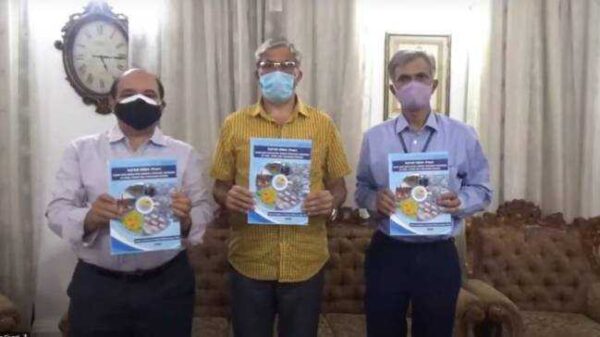The most awaited Pune emission inventory report to understand the contribution of various sources of emissions in Pune Air quality has been released by Prof. Nitin Kalmarkar, Vice-Chancellor of SPPU. The final product yielded mapping of pollution sources in each 400m x 400m grid of PMR for 8 major pollutants namely, PM2.5, PM10, NOx, CO, SO2, BC, HC. The report has been released in presence of Director, IITM, Prof. Ravi Nanjundiah, lead author Prof. Gufran Beig, Founder Project Director, SAFAR, and Dr. B.S. Murthy of IITM and Prof. Gosavi, Head, Environment Science Department, SPPU.

The emission inventory campaign has been led by Indian Institute of Tropical Meteorology (IITM) Pune under the Ministry of Earth Sciences along with SPPU, Pune and under expert advice of Prof. Saroj Kumar Sahu of Utkal University. Geographical Information System (GIS)-based statistical emission model developed by scientist of IITM is used to develop fine resolution of 400m gridded products.
Around 6 months long emission inventory campaign involving more than 200 students from IITM, SPPU and Utkal University was carried out during 2019-20 in Pune Metropolitan region including Pune, Pimpri and Chinchwad regions with around 2,50,000 hours of work. This exercise was tocollect real time primary activity data of 26 differentlocal sources of air pollution.
The click counters, low volume samplers and various survey forms were used to get activity accounting.This exercise was earlier done in 2012-13 at the advent of SAFAR system with a resolution of 1km. Since then significant changes have occurred in land use and demographyand many new sources, which were earlier ignored, have now been quantified.Emission inventory is a scientific way to identify aggregated local source contribution and their region specific spatial distribution within a confined boundary like PMR. It is more effective tool to identify hot spots and plan control measures.

